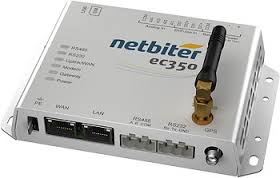By understanding when, how and if equipment is operating, we are able to make better decisions regarding site maintenance and take actions when necessary. With a remote monitoring system connected to your field equipment, you can see the exact status of your installations at any time eliminating the need to make costly and time consuming site visits. This enables you to reduce costs in a number of ways.
Perform service only when needed
Field equipment such as power generators, pumps, tanks, wind turbines etc. are often serviced according to a pre-determined service schedule. By understanding how the machine has been operated, it is possible to plan service more dynamically. As site visits are costly, you are able to optimize the service costs by only sending service teams to equipment that actually need service.
With a remote monitoring system, you can check operating hours, oil pressure, battery status, tank levels, GPS position etc.online. A notification may also be generated whenever a critical level has been reached, for example if the equipment has been running more than expected.
With a power meter connected to you equipment, you can easily see how much energy you are consuming. Some remote monitoring systems include power meters which allows you to get detailed statistics and historical data of your energy consumption.
Test the equipment remotely to reduce start-up problems
Back-up power generators need to be regularly tested to ensure that they can start when needed. Remote test starts can be made with a remote monitoring system that has control capabilities and is connected to the generator controller. With a simple action such as a remote operational test, you may increase the likelihood of the generator working the day there is a power outage.
How it works
There are three main elements to a modern remote monitoring system. The first is the physical layer that comprises of a communication gateway that links to your equipment, acquires the data, and communicates it via the cellular network or the Internet. The second is the remote server that collects and stores the data. This is often referred to as “The Cloud” and is basically a server on the Internet. The third element is the software services that provide secure access to the data through a user interface. This also includes functionality such as alarms via SMS or Email whenever certain thresholds are reached.


SlideShare
Twitter
Facebook
YouTube
LinkedIn